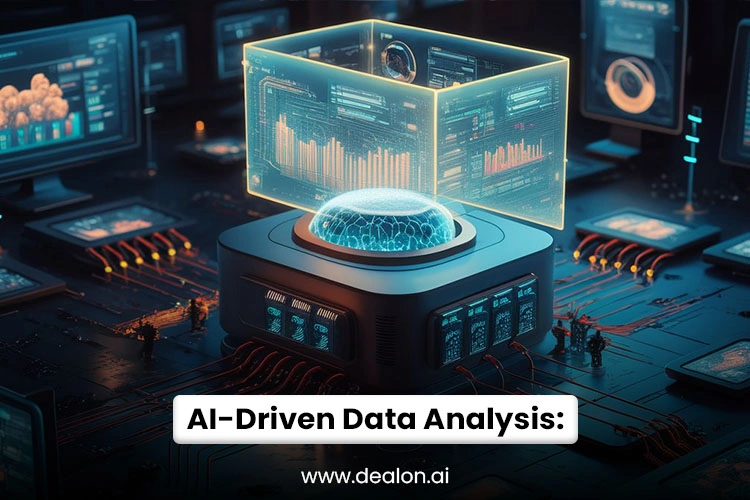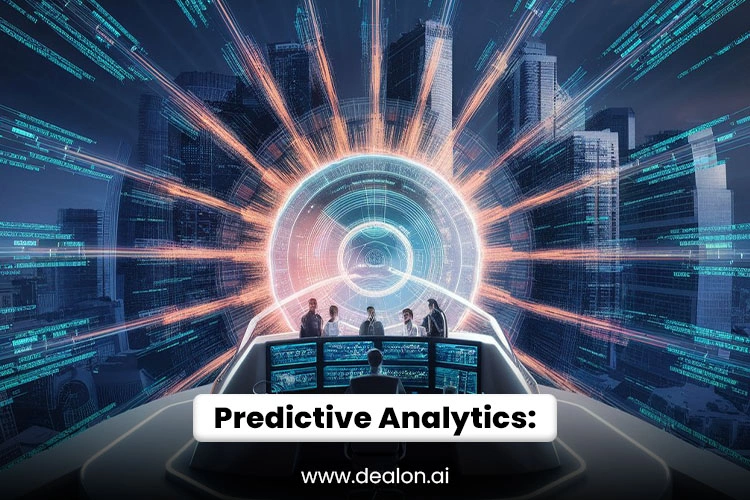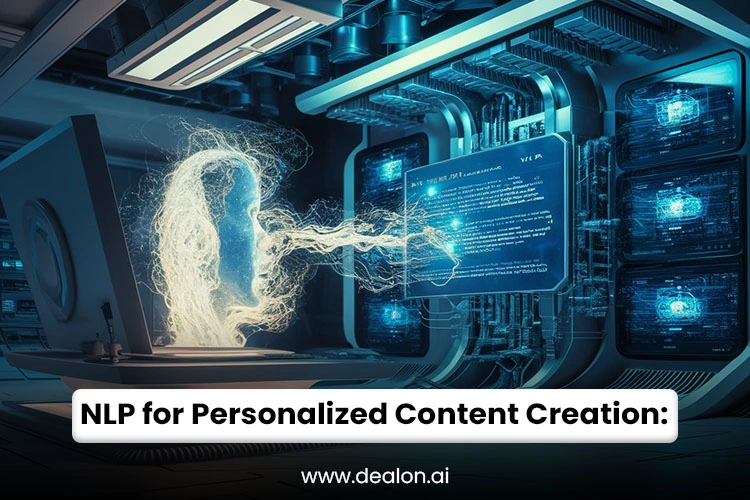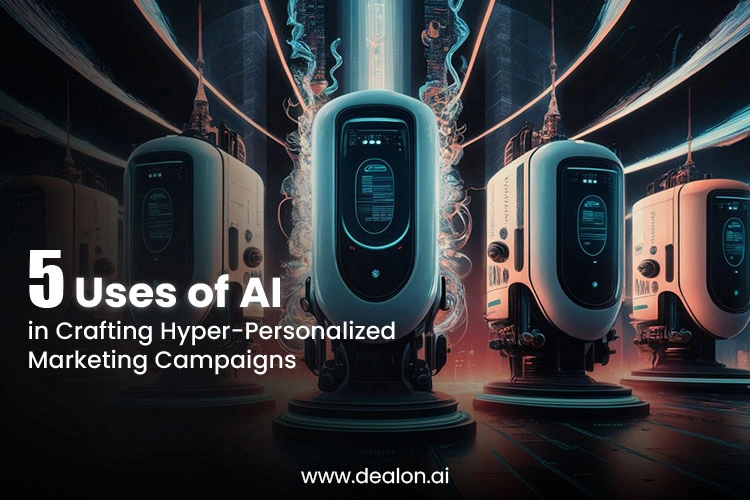In today’s digital landscape, personalized marketing has transcended from a luxury to an imperative for success. As consumers grow more discerning and demand customized experiences, businesses must evolve to meet their needs on a deeply individual level. AI is revolutionizing marketing, empowering professionals to create highly personalized campaigns that captivate and connect with audiences like never before.
AI’s unparalleled ability to analyze extensive data allows marketers to glean deep insights into consumer behavior, preferences, and purchasing patterns. This data-driven intelligence forms the foundation for creating highly targeted marketing strategies beyond the one-size-fits-all approach. With AI’s capabilities, businesses can offer dynamically personalized content, product recommendations, and real-time engagement that enhances the customer experience and drives measurable results.
Also Read: AI in Customer Retention: Strategies for Reducing Churn Rates In 2025
1. AI-Driven Data Analysis for Audience Segmentation

Understanding and targeting the right audience has never been more critical in dynamic marketing. Traditional segmentation techniques, which group consumers based on broad categories like age, gender, or geographical location, have limitations. While they offer a foundation, they fall short of fully understanding the nuances of consumer behavior and preferences. Enter AI-driven data analysis—a revolutionary approach that allows marketers to go far beyond conventional segmentation, providing a granular understanding of their audiences.
By processing data from a wide range of touchpoints—such as social media interactions, website browsing patterns, purchase history, and even customer feedback—AI algorithms can uncover intricate patterns and behaviors that may be invisible to human marketers or traditional analytics tools. When analyzed through AI, this data reveals highly detailed consumer profiles that highlight who customers are and how they think, behave, and make decisions.
For instance, AI can identify clusters of consumers who exhibit similar behavioral patterns but belong to different demographic groups. This allows marketers to develop hyper-targeted campaigns that speak directly to the unique preferences of these subgroups, even if they don’t share common demographic characteristics. For example, AI could find that a segment of young professionals in urban areas share similar purchasing habits, even though they span different age ranges or income levels. This insight enables brands to craft messaging, offers, and product recommendations that resonate on a personal level.
Moreover, AI’s ability to predict trends is essential for effective audience segmentation. By analyzing historical data, AI can predict future behavior, helping marketers identify high-value customers before they even make a purchase. This forward-looking approach allows for proactive targeting, where marketers can create personalized experiences that anticipate a customer’s needs. For example, suppose AI detects a pattern of repeated visits to a particular product page. In that case, it can trigger personalized follow-up messages or exclusive offers that drive the customer closer to a purchase.
Additionally, AI can assess engagement levels across various channels, identifying which platforms and touchpoints drive the most value for different audience segments. Whether email open rates, social media interactions, or time spent on a website, AI can determine the optimal channels for reaching specific audiences, ensuring that marketing campaigns are personalized and delivered through the most effective medium.
2. Predictive Analytics for Anticipating Customer Needs

In today’s customer-centric marketplace, understanding and anticipating customer needs has become a pivotal strategy for driving engagement and increasing conversions. Traditional marketing often operates reactively, responding to current customer behaviors, but predictive analytics powered by AI allows marketers to take a proactive approach. By examining past data and identifying trends, AI can predict future consumer behavior, giving businesses a decisive edge in creating impactful marketing campaigns.
At the core of predictive analytics is the capacity to identify trends from past interactions. AI algorithms process extensive data, including previous purchase histories, browsing behaviors, engagement metrics, and social media activity. This historical data becomes the foundation for predictive models that project future actions, such as when customers might make their next purchase or which products they are likely to consider. For example, suppose a consumer frequently buys a particular product during specific times of the year. In that case, AI can predict the likelihood of a similar purchase shortly, allowing marketers to target that individual with timely promotions or recommendations.
Moreover, predictive analytics doesn’t rely solely on direct data but also incorporates external factors like seasonality, geographic trends, and broader economic indicators. This expanded analysis allows marketers to adjust their strategies according to shifting conditions. For instance, if data shows that certain products surge in demand during particular seasons, AI can adapt marketing efforts to push those products at optimal times, ensuring maximum relevance and timeliness in their outreach.
By anticipating customer needs before expressing them, businesses can deliver highly customized product suggestions, offers, or promotions that seem intuitive and tailored. AI-powered recommendation engines, such as those seen in e-commerce giants like Amazon or Netflix, rely on this principle to drive upsells and cross-sells, recommending products that match a customer’s previous purchases or preferences. This personalized experience enhances customer satisfaction, giving consumers options they are more likely to be interested in at the right moment.
Dynamic pricing is another innovation made possible by predictive analytics. AI can adjust real-time pricing based on forecasted demand and customer preferences to match the consumer’s perceived product value. Suppose a customer shows a high likelihood of purchase but hesitates due to price sensitivity. In that case, AI can offer a limited-time discount or suggest a similar product at a lower price point, driving conversions without diminishing the brand’s value proposition.
3. Natural Language Processing (NLP) for Personalized Content Creation

Content remains the cornerstone of successful campaigns in digital marketing, but its ability to connect meaningfully with consumers hinges on personalized experiences. As the demand for more tailored, relevant interactions grows, businesses must evolve their approach to content creation. This is where Artificial Intelligence (AI), specifically Natural Language Processing (NLP), steps in, revolutionizing how brands craft content and engage with their audiences. By allowing machines to comprehend and produce human language with contextual depth and personalization, NLP elevates tailored content to new heights.
NLP’s core ability lies in its capacity to process and interpret extensive amounts of textual data, discerning the underlying meaning, tone, and sentiment behind each interaction. By leveraging this understanding, AI can produce content that resonates more deeply with specific consumer segments, adapting the messaging and style to suit individual preferences. Whether email subject lines, social media copy, or product descriptions, NLP ensures that every content is precisely tailored to meet its target audience.
For instance, AI-driven email marketing platforms utilizing natural language processing (NLP) can craft subject lines and email content tailored to the recipient’s interests and past interactions with the brand. By analyzing past behavior—such as purchase history, browsing patterns, or even responses to past campaigns—NLP models predict the language and tone that would most likely grab the recipient’s attention. This personalized experience has a measurable impact on open and click-through rates, significantly enhancing the effectiveness of email marketing efforts.
Beyond email, NLP also optimizes content for social media. AI can create posts that adapt to a specific audience segment’s preferences and modify the tone and style to align with platform conventions. Whether a brand targets a young, casual audience on Instagram or a professional, industry-specific group on LinkedIn, NLP tailors the language accordingly, ensuring that the message resonates most appropriately. Furthermore, NLP can optimize content to align with real-time events, trending topics, or shifts in consumer sentiment, making it possible for brands to remain highly relevant and responsive in their campaigns.
Product descriptions, another critical component of online retail marketing, benefit significantly from NLP’s power to generate dynamic, customer-centric language. AI can create descriptions highlighting the features and benefits most relevant to the individual shopper by analyzing consumer behavior and preferences. For example, suppose a customer has previously shown interest in eco-friendly products. In that case, NLP can generate descriptions emphasizing sustainability, even for items that may not have been directly marketed.
4. Dynamic Pricing and Offers Based on Real-Time Data
In the ever-evolving digital commerce landscape, where consumer behavior is unpredictable and market conditions fluctuate constantly, businesses must adopt pricing strategies that reflect this dynamism. AI has become a vital enabler of real-time pricing and offer optimization, allowing businesses to stay agile and competitive while simultaneously providing personalized value to consumers.
AI’s ability to analyze massive real-time data enables dynamic adjustments to pricing and offers based on market trends, customer behavior, and competitor actions. For instance, AI can monitor how customers interact with an online store, such as the items they add to their cart, the amount of time they spend on a product page, and even past purchase history. If AI detects that a customer is about to abandon their cart, it can trigger a real-time personalized offer, such as a time-limited discount or a free shipping incentive. This targeted intervention helps convert a hesitant shopper into a paying customer and makes them feel valued through personalized attention.
Moreover, AI can analyze competitor pricing strategies, ensuring a business’s prices remain competitive without sacrificing profitability. This dynamic adaptability allows brands to optimize their pricing structure on a granular level, tailoring offers to match the perceived value of a product based on individual customer profiles. For example, frequent buyers may receive loyalty discounts, while first-time visitors could be enticed with a special introductory offer.
Through AI-driven dynamic pricing, businesses can respond swiftly to market shifts, seasonal demand changes, and external factors like supply chain disruptions. This approach maximizes revenue and enhances the overall customer experience by offering personalized deals and pricing that align with individual buying behaviors and external market dynamics.
5. Chatbots and Virtual Assistants for Personalized Customer Interaction
Chatbots and Virtual Assistants for Personalized Customer Interaction
In today’s fast-paced digital marketplace, immediacy and personalized experience are paramount to delivering exceptional customer experiences. Enter AI-driven chatbots and virtual assistants, powerful tools that have revolutionized customer interaction by offering immediate, tailored responses that enhance engagement and drive conversions. These AI solutions have become indispensable to modern marketing campaigns, ensuring that each customer feels heard and valued.
AI-powered chatbots utilize advanced Natural Language Processing (NLP) algorithms to understand and interpret customer inquiries in real-time, creating the illusion of seamless human-like interaction. Chatbots can deliver hyper-personalized recommendations, product suggestions, and responses by analyzing previous interactions, purchase history, browsing behavior, and demographic data. For example, if a customer previously expressed interest in a particular type of clothing, the chatbot might proactively suggest similar items or notify them of a sale on those products.
Beyond simple interactions, AI-driven chatbots and virtual assistants also play a central role in navigating customers’ purchasing journeys. Whether assisting with product selection, troubleshooting an issue, or answering questions about delivery times, chatbots offer real-time support, helping customers make informed decisions swiftly. This ability to provide instant, personalized assistance at critical touchpoints in the buying process improves user experience and increases the likelihood of conversion.
Moreover, these AI tools can operate across multiple channels—websites, mobile apps, and even social media platforms—ensuring a consistent, omnichannel customer experience. By integrating with other marketing tools, AI chatbots can bridge customer service and sales, upsell products, or cross-promote services based on previous interactions.
Ultimately, AI chatbots and virtual assistants are integral to creating personalized, intuitive marketing campaigns that foster more profound, meaningful customer relationships. Their ability to provide timely, relevant responses positions brands to enhance customer satisfaction, drive engagement, and increase sales—delivering value to businesses and their customers.
Conclusion
As AI continues to reshape the marketing landscape, the ability to craft hyper-personalized marketing campaigns has become critical in achieving sustained business success. From AI-driven data analysis and audience segmentation to predictive analytics, Natural Language Processing (NLP), dynamic pricing, and chatbots, each innovative application enables businesses to create more targeted, relevant, and impactful customer interactions.
AI’s ability to process extensive data and adapt to real-time market dynamics allows marketers to fine-tune their strategies. Predictive analytics empowers businesses to anticipate customer needs before they arise, while NLP enhances content creation, making messaging more conversational and contextually relevant. Dynamic pricing and offers ensure customers receive value at the most opportune moments, driving conversions and customer satisfaction. Furthermore, AI-powered chatbots provide immediate, tailored support, fostering deeper customer relationships.

